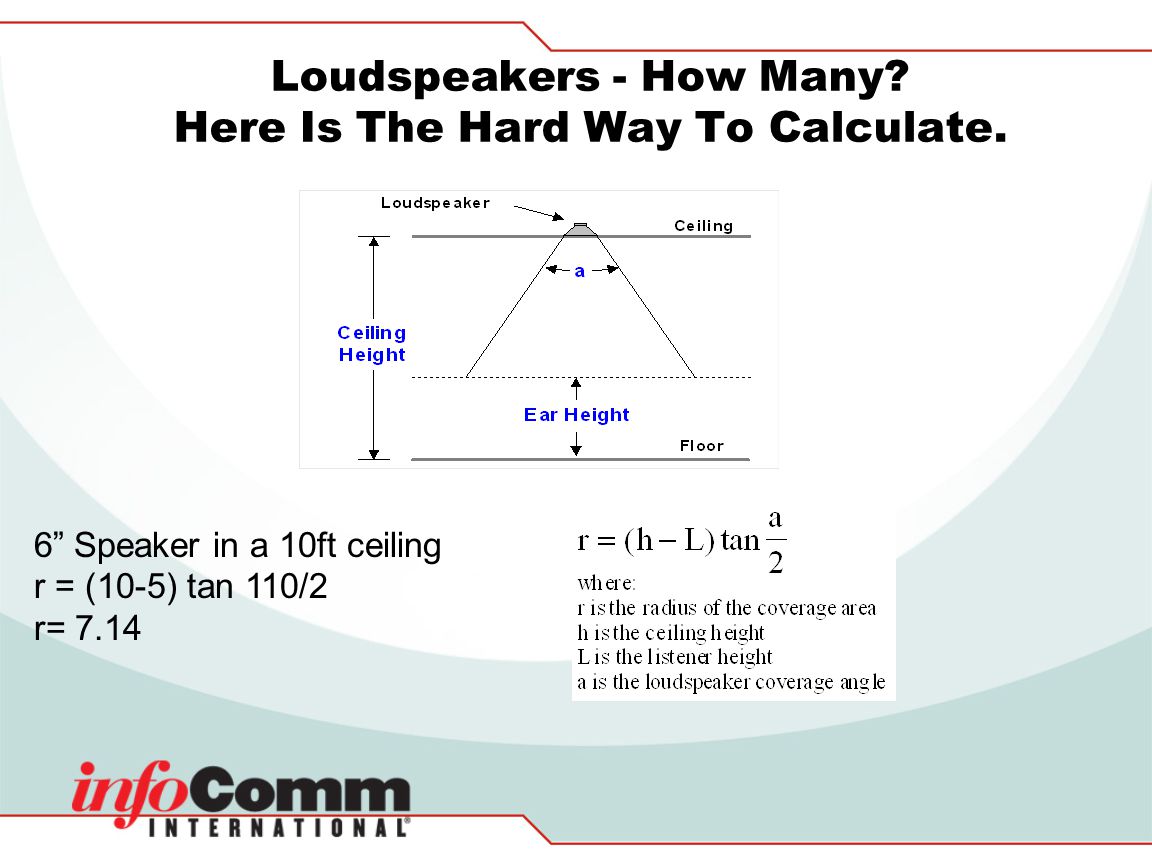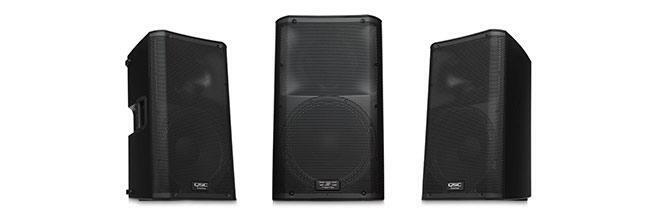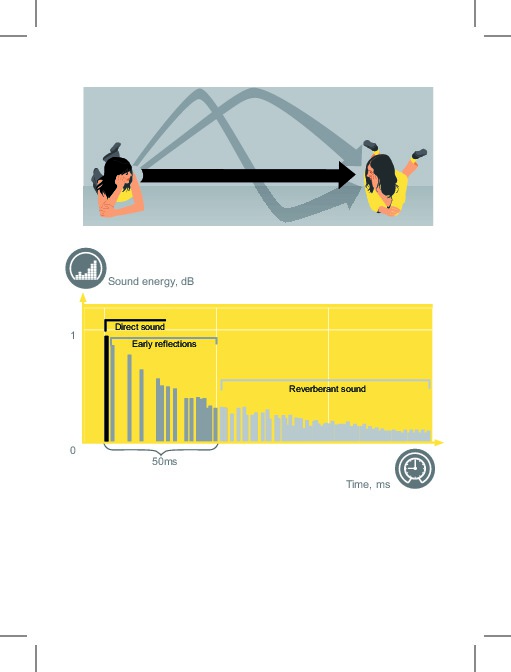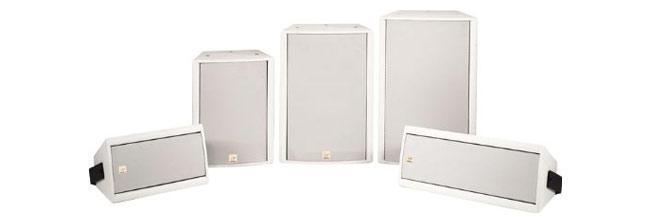Ceiling Speaker Coverage Formula

Subtract the ear height from the ceiling height and multiply that number by three.
Ceiling speaker coverage formula. If you look at the specifications of speaker boxes you should see something like dispersion h x v. This doesn t meet our requirements but i found that if i aim it lower i can can get more even coverage and meet the crossover point with the main speaker. This is stating the nominal angle of high frequency dispersion in the horizontal and vertical plane. Virtual sim tells me that there is about a 8db difference from on axis to off axis.
D 2 h h tan c 2 d coverage diameter h height mentioned above h ear level height c coverage angle. For simple purposes this formula should be used for all bose and jbl ceiling speakers plus any ceiling speakers that are four to five inches in diameter. Speakers square footage ceiling height ear height 3 2. Take spacing and divide by 2.
The speaker coverage calculator recommends a upa 1p aimed 21 2 above the front. Here is how you lay out the ceiling speakers. To generate the above layout we are using the following formula as per avixa cts d design guidelines. Coverage per speaker 211sq ft 304sq ft 414sq ft 541sq ft 684sq ft 845sq ft 1022sq ft 1216sq ft 1427sq ft 1655sq ft 2162sq ft 2736sq ft 3378sq ft basic system coverage per speaker 422sq ft 608sq ft 828sq ft 1081sq ft 1368sq ft 1689sq ft 2044sq ft 2432sq ft 2855sq ft 3311sq ft 4324sq ft 5473sq ft 6756sq ft.
Simply enter some basic information including room dimensions the extron ceiling speaker model the type of audio content to be presented and. Take for example a recessed ceiling speaker that has a linear dispersion of 90 degrees at the 2khz octave the octave most important for speech articulation. Although there are formulas that can help you calculate proper coverage given controlled circumstances conditions created by room shapes ceiling heights the presence or absence of walls and many other factors combine to render the process of providing adequate speaker coverage as much an art as a science. Coverage area per speaker the approximate area that each speaker covers defined by the frequency range of the audio content and the maximum allowable attenuation.
Square the result and then divide it into the square footage. Step 2 using this starter speaker use full spacing working left to right for first row. Covered distributed speaker system to be edge to edge coverage where the edges of the speaker s coverage circles at the listening height just touch each other. Starting in a corner place first speaker at this 1 2 spacing down the wall and 1 2 spacing into the room.

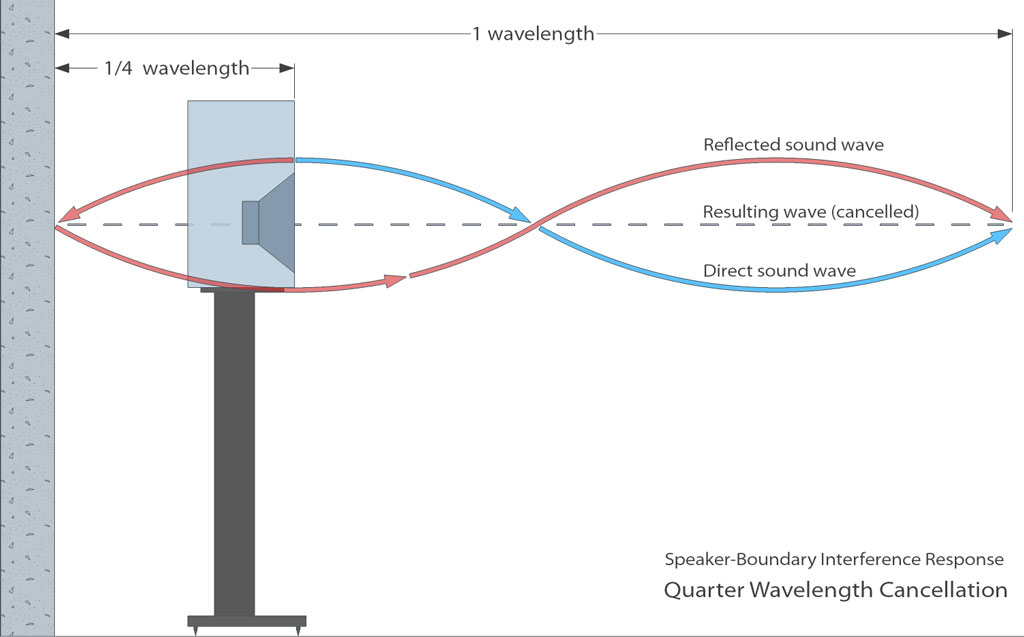





.jpg)
